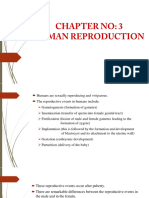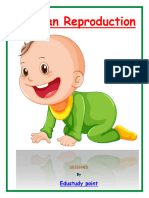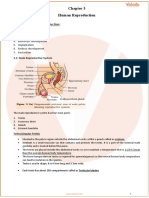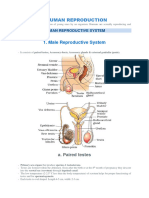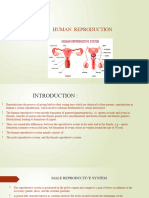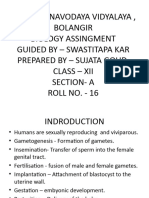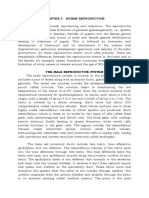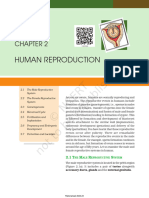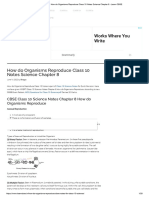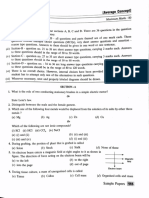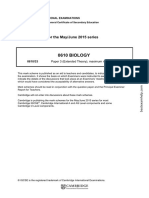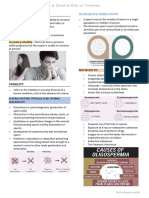0% found this document useful (0 votes)
9 views11 pagesHuman Reproduction Notes
The document provides a comprehensive overview of human reproduction, detailing the processes of internal fertilization, gestation, and birth. It describes the male and female reproductive systems, including the structures and functions of the testes, ovaries, and associated ducts, as well as the processes of spermatogenesis and oogenesis. Additionally, it outlines the menstrual cycle, fertilization, and sex determination of the child.
Uploaded by
tejasgowda9100Copyright
© © All Rights Reserved
We take content rights seriously. If you suspect this is your content, claim it here.
Available Formats
Download as PDF, TXT or read online on Scribd
0% found this document useful (0 votes)
9 views11 pagesHuman Reproduction Notes
The document provides a comprehensive overview of human reproduction, detailing the processes of internal fertilization, gestation, and birth. It describes the male and female reproductive systems, including the structures and functions of the testes, ovaries, and associated ducts, as well as the processes of spermatogenesis and oogenesis. Additionally, it outlines the menstrual cycle, fertilization, and sex determination of the child.
Uploaded by
tejasgowda9100Copyright
© © All Rights Reserved
We take content rights seriously. If you suspect this is your content, claim it here.
Available Formats
Download as PDF, TXT or read online on Scribd
/ 11
